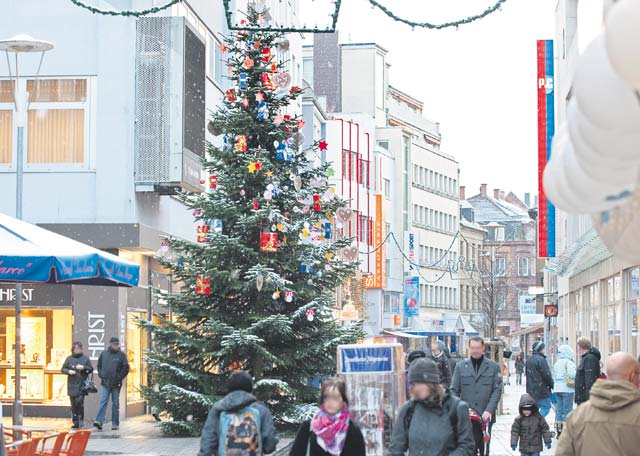
The most important symbol for Christians during the holiday season is the Christmas tree.
This is the time to look for a Christmas tree to put up and decorate for the holidays. Many Germans like to cut their own tree in the forest. Some local forestry offices offer special tree cutting dates.
The Donnersberg Forestry Office scheduled two events: 10 a.m. to 3 p.m. Saturday at 67722 Höringen (direction Wackenbornerhof), and 10 a.m. to 4 p.m. near Retzbergweiher (pond) at 67677 Sippersfeld.
The Kaiserslautern Forestry Office will offer tree cutting from 10 a.m. to 3 p.m. Sunday in Landstuhl’s Breitenwald, near the U.S. radar station on county road L470. The next chance to cut a tree, but only spruces for €10 each, will be from 2 to 5 p.m. in Kaiserslautern-Erzhütten, Mühlbergstrasse. Follow the signs.
Finally, several types of Christmas trees will be available to cut from 11 a.m. to 3 p.m. Dec. 20 near the Kaiserslautern Forestry office on Velmanstrasse.
Food and beverages will be served at each event. Customers are asked to bring a handsaw or ax. Forest office employees will pack the trees in nets for proper transportation.
The Christmas tree is considered the most popular symbol for the holidays. Traditionally, most German families put up a Christmas tree in their homes on the morning of Christmas Eve and keep it until Three Kings Day on Jan. 6.
The roots of the Christmas tree date back to Pagan times. Green branches were used to conjure summer during the celebration of winter solstice. Imitations of this tradition were kept throughout centuries.
The first decorated Christmas tree was documented in notes from a 1597 meeting in the town of Türckheim in the Alsace region of France. These documents list the different guilds’ expenses for tree decorations, and they also state that in order to protect the local forests, each citizen was allowed to only cut one tree. The same documents mention the type of decorations at that time — gingerbread, apples, sugar candy and paper flowers.
It is not documented whether the Christmas tree originates in the Alsace. Several towns in the Black Forest also claim to be the place of origin of the Christmas tree. Regardless of where it originates, the Christmas tree soon moved to the Pfalz region.
The first tree decorated with lights showed up in the former Palatinate metropolis of Heidelberg. In letters from 1708, electoral princess Lieselotte von der Pfalz mentioned a common box-tree with candles on every branch. She also talked about tables that were set up like altars with presents for the children — clothes, dolls, candy and more.
Until the turn of the century, the so-called “sugar tree” made from a pole stuck with wire branches and wrapped with green paper served as a Christmas tree. This tree was mainly decorated with candy and cookies.
Until the middle of the 19th century, only Protestants accepted the custom of putting up a Christmas tree. The most important Christmas symbol in Catholic regions was the Nativity scene. Both customs were not combined, and Catholics and Protestants stayed in their own regions. Finally, after Napoleon’s wars and the Vienna Congress, the Prussians moved into Catholic areas. From then on, for both religions, the Christmas tree was a symbol of German culture.
Emigrating Germans spread the custom of the Christmas tree all over the world — to Russia, Brazil, and Mennonites and Amish people took it to their new homes in Pennsylvania in 1748. In front of the White House in Washington the first Christmas tree was put up in 1891.







